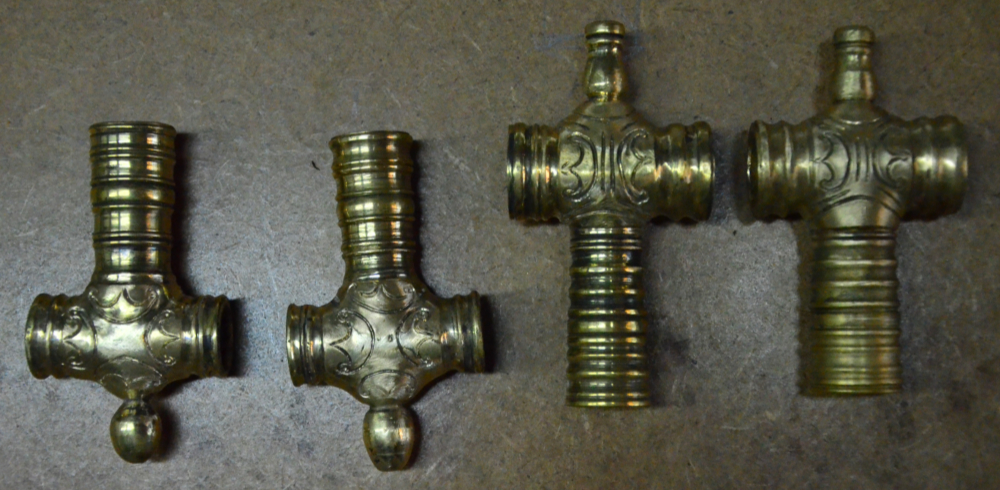Despite their name, brass only appeared in brass instruments relatively recently. Throughout the Copper Age, instruments were made from all sorts of metals but principally from copper and precious metals such as silver and gold, as well as the alloy of these two metals, electrum. When tin-bronze came onto the scene, it was widely used as the alloy of choice for instrument construction. Both the late Bronze-Age irish Horns and the Scandinavian/Baltic bronze lurs consumed masses of bronze in their manufacture.
The alloy brass did appear surprisingly early, way before the Romans came onto the scene but, being an alloy of copper with the metal, zinc, which could not be won from its ore individually, it was not in widespread use. What this means is that the usual way of releasing a metal from its ore simply didn’t work with zinc as the zinc vapourised and went up the chimney of the furnace as smoke. Brass was made by a process called cementation which was slow and tricky to carry out so the alloy was treated as a precious material in Roman times.
When it was used on brass instruments, the alloy was used to make components such as the ferrules which held different yards of the instrument together. When used in this way, it enhanced the appearance of the instrument as its colour contrasted strongly with the bronze sections of the instrument, once they had patinated. The earliest brass instruments I have seen the alloy used on are the cornua from Pompeii where ferrules and support-bar elements were cast from brass.
